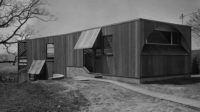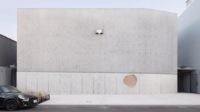Marc Augé, the French anthropologist who died last week at 87, used the tools of a discipline designed to study what it saw as primitive cultures to examine the contemporary globalized world. Though Augé did not write for an audience of architects, his ideas, in particular the concept he developed of the “non-place,” proved important for scholars and theorists of architecture seeking to understand the novel spatialities of modernity.
In his influential 1992 book Non-Places: An Introduction to Supermodernity, Augé contrasted non-places—transitory spaces like airport lounges, train stations, and malls—against what he termed “anthropological places,” or places with history and symbolic meaning that establish their occupants’ position within the social and cultural world. “The space of non-place,” he wrote, “creates neither singular identity nor relations, only solitude and similitude.”

Marc Augé pictured in 2010. Photo by Charles Mallison, Wikimedia Commons
Augé developed his thought through careful study of the built environment, and, in the later decades of his career, often paired anthropological analysis with discussion of his personal experiences of places. In the Metro, his study of the Paris Métro that was published in France in 1986, is filled with remembrances, literary references, and philosophical observations that make for far livelier reading than readers might expect of a scholarly study. In such writings, Augé’s deft blurring of genres pushed disciplinary boundaries and made the anthropologist himself an object of study.
In a 2006 opinion piece for Domus, Augé turned his attention to the prospects for art and architecture under the conditions of contemporary life. In “a world in which there is no longer an elsewhere,” he argued, art struggled to keep a necessary distance from life. “If it is to show us something other than what we see every day, for example at the supermarket or on television, it must be expressive and reflexive.”
Born in Poitiers, in western France, in 1935, Augé studied at the École Normale Supérieure and, after fighting in the Algerian War in the early 1960s, returned to write his thesis on the practices of the Akan people of West Africa. He later joined the École des Hautes Études en Sciences Sociales in Paris, going on to serve as president from 1985 to 1995.
Among Augé’s final books was Everyone Dies Young: Time Without Age (2014), a philosophical examination of time and aging. This was hardly a new theme for him. In In the Metro, published when he was 51, Augé wrote memorably of his growing sense of a gap between young and old: “Because it draws us into quotidian humanity, the subway plays the role of a magnifying mirror that invites us to take account of a phenomenon that, without it, we might risk or perhaps try to be unaware of: if the world, in its majority, is getting younger, we are the ones moving away from it.”






Post a comment to this article
Report Abusive Comment